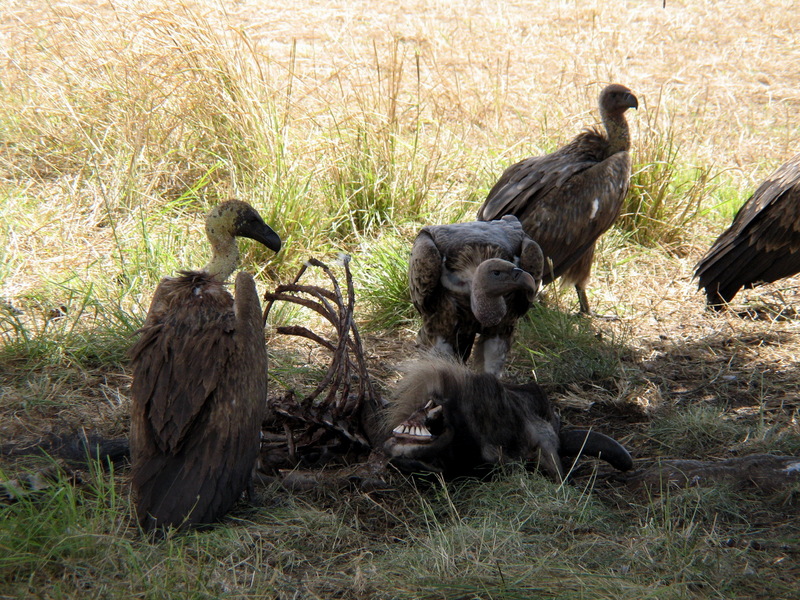African White-backed Vulture (Gyps africanus) - Wiki White-backed Vulture
From Wikipedia, the free encyclopedia
[Photo] African White-backed Vulture (Gyps africanus); Adult vultures eating the carcass of a dead wildebeest in Maasai Mara National Park, Kenya. Date 20th of August, 2007. Author Magnus Kjaergaard.
Copyright (C) 2007 Magnus Kjaergaard
Permission is granted to copy, distribute and/or modify this document under the terms of the GNU Free Documentation License, Version 1.2 or any later version published by the Free Software Foundation; with no Invariant Sections, no Front-Cover Texts, and no Back-Cover Texts. A copy of the license is included in the section entitled "GNU Free Documentation License". |
The
White-backed Vulture,
Gyps africanus, is an
Old World vulture in the family
Accipitridae, which also includes eagles,
kites,
buzzards and hawks. It is closely related to the
European Griffon Vulture, G. fulvus. Sometimes, it is called
African White-backed Vulture to distinguish it from the
Oriental White-backed Vulture - nowadays usually called
Indian White-rumped Vulture - with which it was formerly believed to be closely related.
The
White-backed Vulture is a typical
vulture, with only down feathers on the head and neck, very broad wings and short tail. It has a white neck
ruff. The adult’s whitish back contrasts with the otherwise dark plumage. Juveniles are largely dark. This is a medium-sized
vulture, its body mass is around 5.4 kg.
Like other
vultures it is a scavenger, feeding mostly from carcasses of dead animals which it finds by soaring over savannah and around human habitation. It often moves in flocks. It breeds in trees on the savannah of west and east Africa, laying one egg. The population is mostly resident.
Rarer than previously believed, it is uplisted from a species of Least Concern to Near Threatened in the 2007 IUCN Red List.
http://en.wikipedia.org/wiki/White-backed_Vulture| The text in this page is based on the copyrighted Wikipedia article shown in above URL. It is used under the GNU Free Documentation License. You may redistribute it, verbatim or modified, providing that you comply with the terms of the GFDL. |
